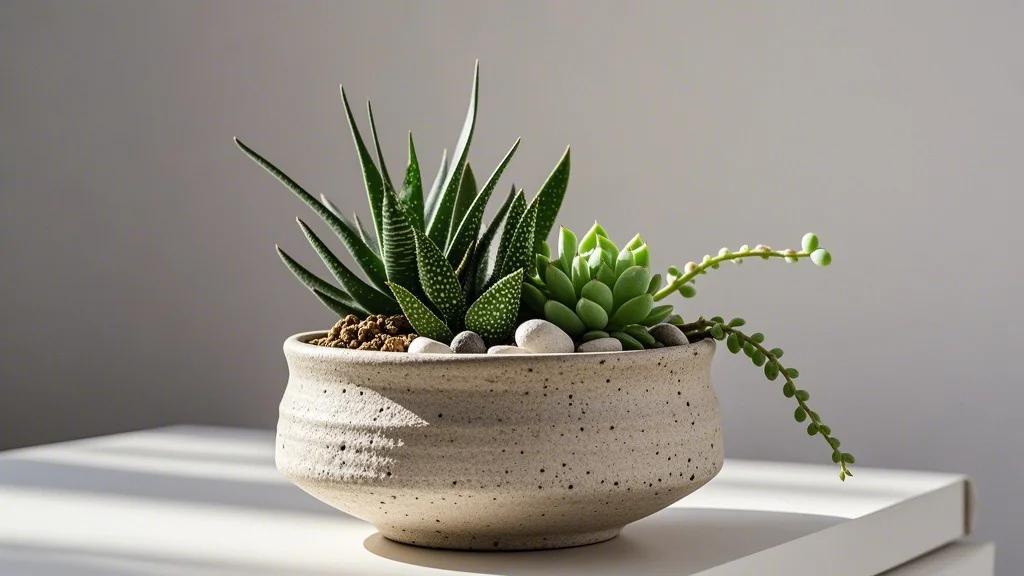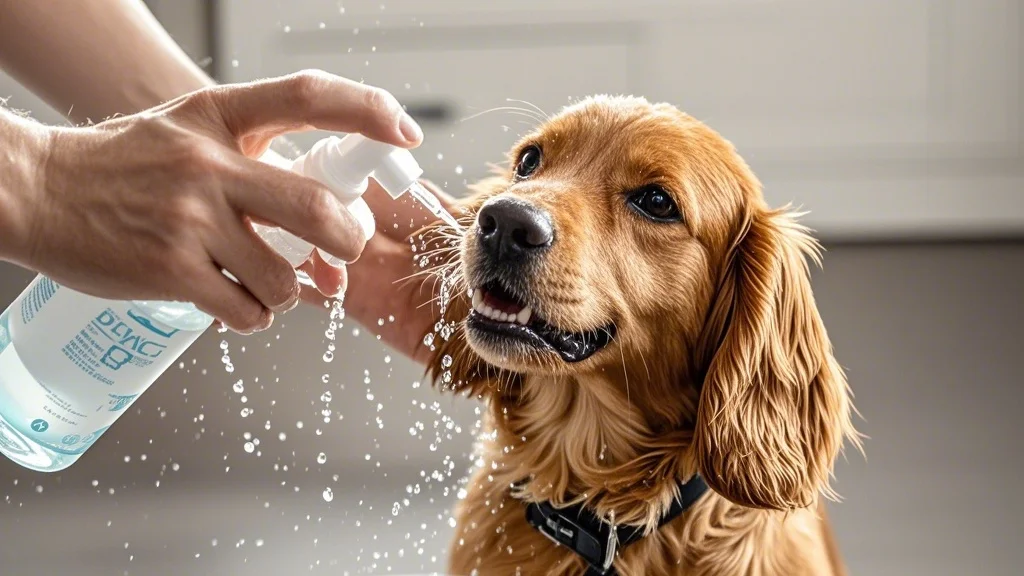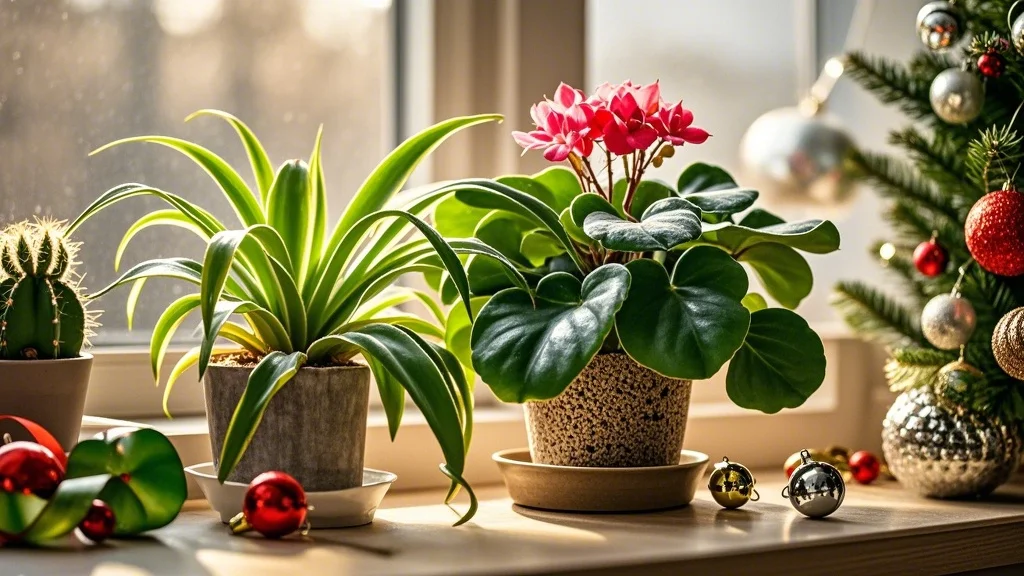For pet owners and tropical plant enthusiasts alike, calatheas offer the perfect blend of stunning foliage and peace of mind. These captivating prayer plants, known for their intricate leaf patterns and daily leaf movements, are not only visually striking but also non-toxic to cats and dogs. In this comprehensive guide, we’ll explore the world of calatheas, their care requirements, and how to incorporate these pet-safe beauties into your urban jungle.
Contents
- 1 What Are Calatheas?
- 2 Popular Calathea Varieties
- 3 Calathea Care Guide
- 4 Common Calathea Problems and Solutions
- 5 Propagating Calatheas
- 6 Decorating with Calatheas
- 7 Why Calatheas Are Perfect for Pet Owners
- 8 Calathea Varieties Safe for Pets
- 9 Tips for Keeping Pets and Calatheas Happy Together
- 10 Conclusion
What Are Calatheas?
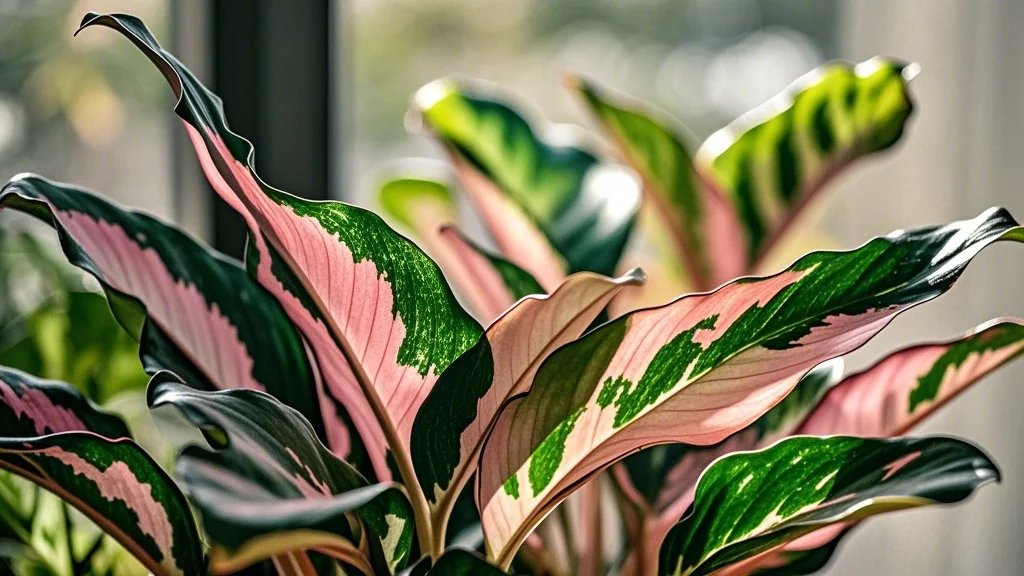
Calatheas are tropical plants belonging to the Marantaceae family, native to the rainforests of South and Central America. Often referred to as prayer plants due to their unique leaf movements, calatheas are prized for their ornamental foliage featuring a wide array of colors, patterns, and textures.
Key Features:
- Diverse leaf patterns and colors
- Non-toxic to pets
- Air-purifying properties
- Daily leaf movements (nyctinasty)
Popular Calathea Varieties
1. Calathea Orbifolia
Known for its large, round leaves with striking silver and green stripes, the Calathea orbifolia is a showstopper in any indoor garden.
2. Calathea Makoyana (Peacock Plant)
The Peacock Plant features oval leaves with intricate dark green patterns on a pale green background, resembling peacock feathers.
3. Calathea Lancifolia (Rattlesnake Plant)
With long, narrow leaves adorned with dark green spots and purple undersides, the Rattlesnake Plant is a unique addition to any collection.
4. Calathea Roseopicta (Rose-Painted Calathea)
This variety boasts pink-tinged leaves with dark green borders and striking rose-colored undersides.
5. Calathea Zebrina (Zebra Plant)
True to its name, the Zebra Plant features bold, alternating light and dark green stripes on its leaves.
Calathea Care Guide
Light Requirements
Calatheas thrive in bright, indirect light. Avoid direct sunlight, as it can scorch their delicate leaves.
Tips:
- Place near north or east-facing windows
- Use sheer curtains to filter strong light
- Supplement with grow lights in low-light areas
Watering
Calatheas prefer consistently moist soil but are sensitive to overwatering.
Watering guidelines:
- Water when the top inch of soil feels dry
- Use room temperature, filtered water
- Ensure proper drainage to prevent root rot
- Increase humidity by misting or using a pebble tray
Soil and Potting
A well-draining, nutrient-rich potting mix is essential for calatheas.
Ideal soil mix:
- 2 parts peat moss or coco coir
- 1 part perlite
- 1 part orchid bark
Repot every 1-2 years or when the plant outgrows its current container.
Temperature and Humidity
Calatheas prefer warm, humid environments reminiscent of their tropical origins.
Optimal conditions:
- Temperature: 65-80°F (18-27°C)
- Humidity: 50-60% or higher
To increase humidity:
- Group plants together
- Use a humidifier
- Place plants on pebble trays filled with water
Fertilizing
Feed your calathea during the growing season (spring and summer) to promote healthy growth and vibrant foliage.
Fertilizing tips:
- Use a balanced, water-soluble fertilizer (10-10-10)
- Apply monthly at half-strength
- Avoid fertilizing during winter dormancy
Pruning and Maintenance
Regular pruning helps maintain the plant’s shape and removes damaged or yellowing leaves.
Maintenance routine:
- Trim yellowing or damaged leaves at the base
- Wipe leaves gently with a damp cloth to remove dust
- Rotate the plant periodically for even growth
Common Calathea Problems and Solutions
1. Crispy Leaf Edges
Cause: Low humidity or mineral buildup from tap water
Solution: Increase humidity and use filtered or distilled water
2. Yellowing Leaves
Cause: Overwatering or poor drainage
Solution: Adjust watering frequency and ensure proper drainage
3. Curling Leaves
Cause: Underwatering or low humidity
Solution: Water more frequently and increase humidity
4. Fading Leaf Patterns
Cause: Too much direct sunlight
Solution: Move to a location with bright, indirect light
5. Pest Infestations
Common pests: Spider mites, mealybugs, scale insects
Solution: Isolate affected plants, treat with neem oil or insecticidal soap
Propagating Calatheas
While calatheas can be challenging to propagate, it’s possible through division during repotting.
Steps for propagation:
- Carefully remove the plant from its pot
- Gently separate the root ball into sections, ensuring each has healthy roots and leaves
- Plant each division in a separate pot with fresh potting mix
- Water thoroughly and maintain high humidity during the establishment period
Decorating with Calatheas
Calatheas make excellent statement plants in various home decor styles.
Styling ideas:
- Group with other tropical plants for a lush, jungle-inspired look
- Use as a colorful accent in minimalist spaces
- Place in bathrooms to take advantage of natural humidity
- Pair with macrame hangers for a boho-chic vibe
Why Calatheas Are Perfect for Pet Owners
As a pet owner, choosing houseplants that are safe for your furry friends is crucial. Calatheas offer several advantages:
- Non-toxic: Calatheas are not poisonous to cats or dogs, making them a worry-free choice for pet owners.
- Engaging for pets: The movement of calathea leaves can provide entertainment for curious pets without posing a danger.
- Air-purifying: Like many houseplants, calatheas help improve indoor air quality, benefiting both humans and pets.
- Low-growing: Most calathea varieties stay relatively compact, reducing the risk of accidental toppling by playful pets.
Calathea Varieties Safe for Pets
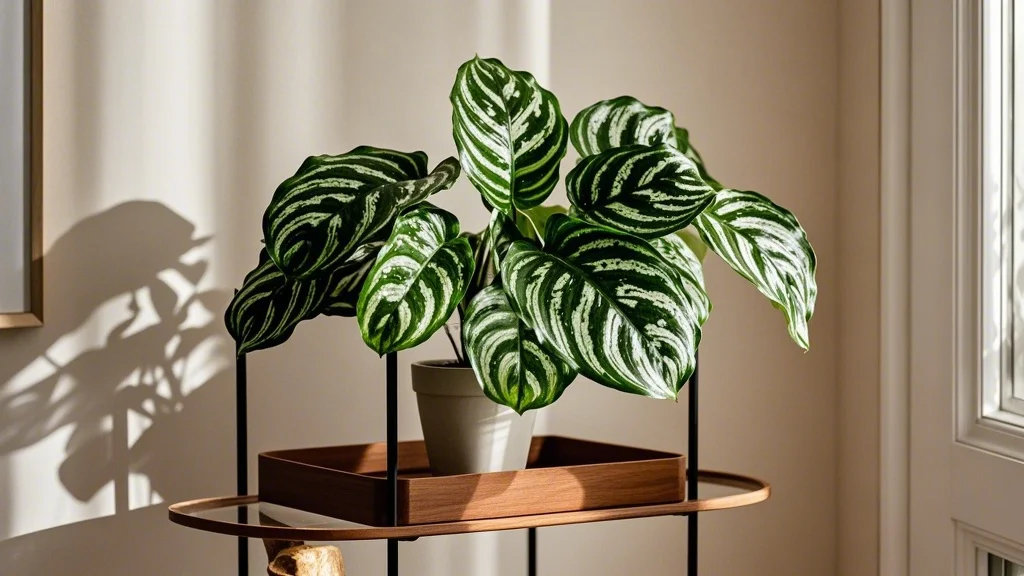
While all calatheas are considered non-toxic, here are some popular varieties that are particularly pet-friendly:
- Calathea Vittata (White Stripe Calathea)
- Calathea Rufibarba (Furry Feather Calathea)
- Calathea Crocata (Eternal Flame Plant)
- Calathea Ornata (Pinstripe Plant)
- Calathea Warscewiczii (Jungle Velvet)
Tips for Keeping Pets and Calatheas Happy Together
- Strategic placement: Position calatheas out of easy reach of pets to prevent accidental damage to leaves.
- Provide alternatives: Offer pet-safe grasses or herbs for cats to chew on, reducing their interest in your calatheas.
- Regular grooming: Keep your calatheas well-maintained to minimize fallen leaves that might tempt pets.
- Supervision: Monitor interactions between pets and plants, especially when introducing new calatheas to your home.
- Enrichment: Ensure your pets have plenty of toys and activities to keep them engaged and less likely to bother your plants.
Conclusion
Calatheas are a perfect choice for pet owners and plant enthusiasts seeking to add a touch of tropical beauty to their homes. With their stunning foliage, air-purifying qualities, and pet-safe nature, these prayer plants offer the best of both worlds. By following the care guidelines outlined in this guide, you can cultivate a thriving collection of calatheas that will bring joy to both you and your furry companions.
Remember, while calatheas are non-toxic, it’s always best to discourage pets from chewing on or playing with any houseplants. With proper care and attention, your calatheas will flourish, creating a harmonious and visually striking environment for all inhabitants of your urban jungle.

